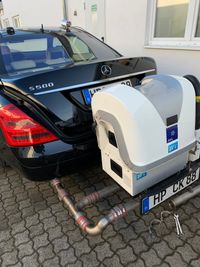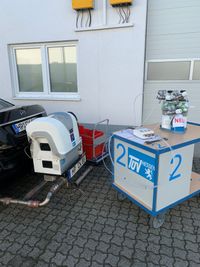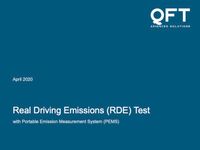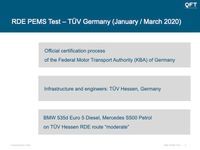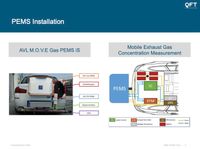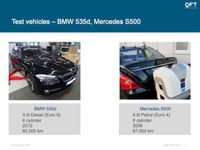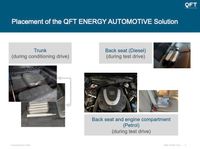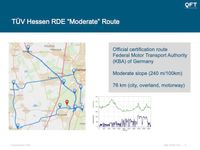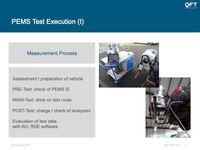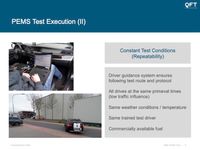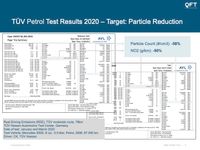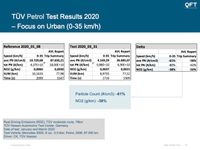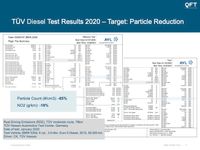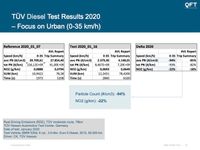TÜV Automotive Real Driving Emissions (RDE) PEMS Test
In 2020, our QFT ENERGY AUTOMOTIVE Solution was taken through different types of testing and evaluations of passenger cars equipped with the product solution. These institutional tests were conducted on the premises and with the infrastructure of TÜV Hessen, Germany (Technischer Überwachungs-Verein / Technical Inspection Association) and their experienced engineers. This ensured that the tests were carried out with state-of-the-art testing and measuring equipment and corresponding professional qualifications.
The TÜV is a multinational corporation providing inspection and product certification services (road traffic approvals) to industry, governments, non-profit organizations, and individuals. Their engineers have performed hundreds of Real Driving Emissions (RDE) and Bench Tests over many years. The tests in 2020 that are described in the following were carried out with the same test setup as official German certification approvals and were performed by a highly qualified driver, a TÜV engineer who himself is training and certifying RDE and Test Bench drivers within the organization.
This report shares an overview of the official test results, especially the urban (sub-35 km/h) speed-band analysis, with the QFT ENERGY AUTOMOTIVE Solution in January and March 2020.
This test was defined to only measure exhaust pollution, not fuel consumption, and the focus was put on the reduction of particle emissions and NO2 emissions with the QFT ENERGY AUTOMOTIVE Solution.
TÜV Hessen performed this RDE test with two vehicles: A Mercedes S500 from 2006, eight-cylinder, 5.5-liter, petrol car with one of the cleanest gasoline engines. And a BMW 535d from 2011, six-cylinder, 3.0-liter, Euro 5 diesel car. The respective cars were equipped with a PEMS (Portable Emission Measurement System) system and were taken on the standardized TÜV Hessen RDE certification route profile “moderate”. The test drives were performed at similar times of day and in similar weather and temperature conditions.
In a first step, a reference measurement drive was carried out without any technical changes or modifications to the vehicle. In the next step, the vehicle was only equipped with the QFT ENERGY AUTOMOTIVE Solution (5th generation). After equipping the vehicle and some free drives on the highway were completed, the procedure for the reference measurement drive was repeated in the test drive. Several data points were determined and the developments in between the reference drive and test drive were compared.
The reference test drive was performed in January 2020. As the weather conditions didn’t allow for the test drive to take place in January as well, it was scheduled for March 2020 in order to have comparable weather conditions and to ensure validity of the test results.
Based on the obtained 2020 AVL report and raw data issued by TÜV Hessen an analysis has been performed over different speed bands occurring in the respective drives.
